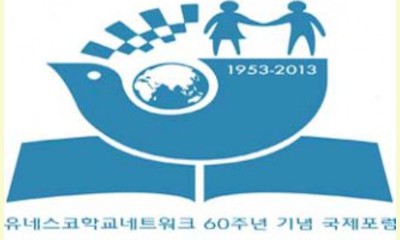|
|
UNESCO/ASPnet training on social cohesion begins
un articulo por Lolly M Camara-Secka, Daily Observer, The Gambia
The Gambia National UNESCO Commission its
Associated Schools Project Network yesterday
[April 7] started a two-day training workshop for
the promotion of intercultural dialogue, social
cohesion and a culture of peace and non-violence,
supporting the education systems’ response to
contemporary challenges for ESD in ASPnet Schools
in The Gambia, at the Laico Atlantic Hotel in
Banjul.

click on photo to enlarge
The theme for this year’s training workshop is
meant to raise awareness on the effects of the
Transatlantic Slave Trade (TST), Climate Change and
environmental isues for the ASPnet schools in the
Greater Banjul Area.
Delivering his opening statement, on behalf of
the permanent secretary at the ministry of Basic
and Secondary Education, Ebrima Sissawo
congratulated UNESCO/ASPnet for their foresight
in organising such a training on such a pertinent
global issue. He also intimated that “UNESCO is to
the United Nations as the ASPnet is to UNESCO”,
noting that UNESCO is the “intellectual” agency of
the UN. He then stated that the ASPnet is the
incubator or the “laboratory” of ideas of UNESCO
on UNESCO matters.
“In 1999, marine and coastal environment became
the front burner of UNESCO programmes, with the
launching of the SANDWATCH project. It was a
volunteer network of school children, teachers
youth groups; non-governmental and community –
based organisations. These came together to
monitor and enhance their beach environments and
the objective is to advocate and increase
awareness of the fragile nature of the marine and
coastal environment and the need to use it
wisely,” Sisawo added.
He also lamented that with a strong field
monitoring component, SANDWATCH tries to make
science live and yet remain inter-disciplinary
with applications ranging from Biology to Woodwork
and from poetry to Mathematics. He added that it
further aims to involve school teachers and
students in scientific observation, measurement
and analysis of beaches, by using an inter-
disciplinary approach, for example, language, Art,
Biology, History, Geography, among others.
He disclosed that this is the more reason that the
UNESCO National Commission and the Gambia ASPnet,
in collaboration with the Banjul City Council
(BBC) and other partners will be conducting a
SANDWATCH beach cleansing exercise of the Banjul
beach on Saturday 12 April 2014 as a sequel to the
workshop.
|








|
DISCUSSION
Pregunta(s) relacionada(s) al artículo :
What is the best way to teach peace to children?,
* * * * *
Comentario más reciente:
Maria Montessori believed that peace was innate within children. Her timeless educational philosophy was developed around this basic understanding. Perhaps all we need to do as teachers is to provide stimulating learning environments that validate this knowing and understanding and nurture it. We may not have to actually teach it, Sharing peace-building stories gently attends to this. Strong, creative and imaginative peace-building characters who focus upon win-win and have faith in peace being possible are at the centre of the story plots. In Hassaun Ali-Jones Bey's (Boundless Gratitude http://boundlessgratitude.com/products.html ) unique and mesmerising story, Black Ink is such a character who bravely crosses the universe seeking validation of what he knows in his heart. The magical character also models all the important peace-building values, understandings and actions needed for peace-building. I believe also that peace-building must be modelled and the whole teaching-learning environment should reflect similar values, understandings and actions...as is the primary focus of the Save the Children Australia UN Global Peace School Program upon which I am presently fortunate to be working. . ... continuación.

|
|









